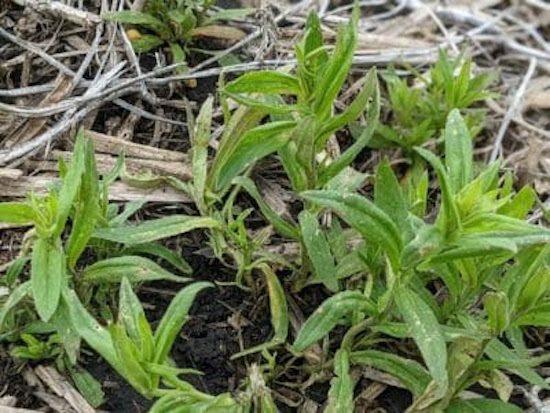Winter camelina is a winter-hardy brassica that is gaining traction in the Midwest as a cover crop ahead of corn or as an oilseed relay crop. Central Iowa farmer Mark Oehlerking recently used glyphosate to terminate his first ever winter camelina cover crop the second week of May, shortly after planting corn into it.
For Mark, camelina as a cover crop draws his interest as potential erosion control and because it has a lower risk of N tie-up compared to cereal rye. Happy with his first trial, he found that the camelina is easy to plant into and easy to terminate. It is important to note, however, that camelina produces less biomass than rye and breaks down more quickly; it doesn't offer much for weed supression or grazing in fall or spring.
In early October, Mark seeded the camelina with a John Deere 750 no-till drill with the grass attachment on low settings. He noted "camelina has very small seeds; make sure your drill is set up to accommodate such small seeds." Mark tested several seeding rates, with guidance from Heartland Co-op, ranging from 2 to 12 lb/ac.
Depending on where the camelina is sourced, the price is relatively low, between $3 to $4.50 per pound of seed. State cost-share programs in Iowa require that at a minimum, camelina be broadcast at 4 lb/ac or drilled at 3 lb/ac. If seeded at cost-share minimums, camelina can be cost effective, although at higher seeding rates it doesn't remain price competitive compared to rye.





Post a comment
Report Abusive Comment